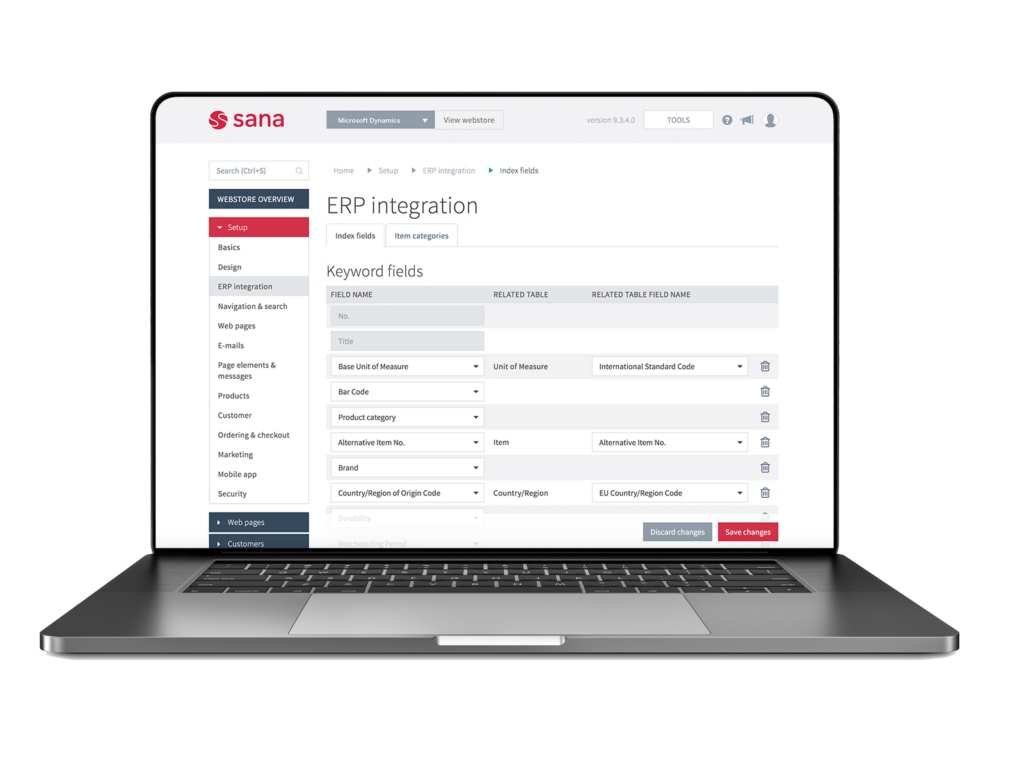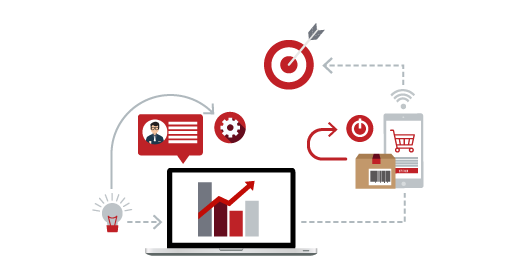Can I Be in Eshopping and Dining Programs

Blog 5 minutes
2021 trend outlook: E-commerce for the food and beverage industry

The food and beverage industry deals with perishable goods that have to be sold quickly to preserve the high quality that buyers expect and that regulations demand. Despite complex logistic processes and increasingly demanding consumers, food and beverage e-commerce (driven by ERP integration) can help companies do so easily. Here are the 3 industry trends impacting this shift toward digital.
The status quo: E-commerce for food and beverage companies
The short time to market and the quick flow of products within the company is what sets the food and beverage industry apart. This is because the perishable goods they produce have a short shelf life. After all, who wants to pay for food and beverage supplies that are past their expiration date, or close to it?
An unhappy customer isn't a repeat customer, so businesses have to align their internal processes to meet buyer demands as quickly as possible.And because consumers rarely buy directly from the manufacturer, the entire food and beverage supply chain require complex internal logistics.
This is the current reality. However, new trends point towards digital disruption finally resulting in the growth of the food and beverage industry e-commerce.
Top trends in the food and beverage industry
According to 2019 data from eMarketer, grocery e-commerce was predicted to grow 18% this year in the U.S. alone. Since eMarketer's report, the world has faced serious change due to the coronavirus pandemic and this change is impacting the food and beverage industry significantly. In fact, according to 2020 research, 31% of U.S. shoppers reported that they will likely continue to use online grocery pickup or delivery — even after the pandemic is over. This is a 20% increase from what we saw prior to COVID-19.
Globally, online sales will make up 15-20% of the food and beverage industry's overall sales by 2025: 10x more than it did in 2016.Why? The industry is adopting alternative methods to meet customer demands.
There are a number of trends in the food and beverage industry that stand out. Read on to learn more, or download our Food and Beverage Industry E-Commerce Trend Report for a deep dive.
1. Regulatory constraints
The food supply chain continues to require all players to adhere to strict operational practices to ensure food safety and quality. Considering the potential consequences of delivering expired or contaminated food and beverage products to consumers, this is not likely to change in the future.

Then there's the circular economy, which has companies striving to systematically reduce waste by retaining more of the value of food and beverage supplies. A good example of this would be using brewers grains to create food for livestock.
Finally, we have two related trends.
After a careful start, e-commerce is finally taking off in the food and beverage industry. Meanwhile, customers are demanding increasingly faster delivery across the entire e-commerce sector. Big tech companies like Amazon and Google are even starting to offer same-day delivery to meet ever-rising customer expectations.
2. The need for efficiency
Each of these trends underlines the importance of efficiency in the food and beverage industry. The challenge we see is maintaining information accuracy in every stage of the supply chain — something that is difficult when having to deal with information overload.
Another risk attached to information overload is inventory overload. Research suggests that inventories are the most essential aspect to consider when creating the optimal pricing strategy for food and beverage products. In other words, your inventory directly affects sales because in the end, it's all about time and information management.
Spotlight: See what implications this has for beverage companies, like wineries and their distributors, in our blog.
3. The rise of e-commerce in the food and beverage industry
So what can your food and beverage business do to overcome today's industry challenges?
For starters, excellent time and information management are essential to reducing waste and improving the quality of delivered perishable goods. Buyers need to know when products are available for ordering and when they will be delivered.
This is where e-commerce for the food and beverage industry comes in. The trick is that food and beverage businesses don't need just any old web store; they need an online sales portal that is fully integrated with the source of all your vital business data and logic: your ERP.

4. ERP e-commerce: Meet new demands with an existing tool
If you have an ERP system such as SAP or Microsoft Dynamics, you already have an incredible ERP for the food industry at your disposal. Those systems are great time management and information management tools. An ERP already helps you keep your business processes running smoothly, but it can do something else as well: improve your position in the market.
You can get this extra benefit out of your ERP system by integrating it with an e-commerce system. This lets you display essential product and logistics data in your web store, like current and even future inventory levels. When you integrate your e-commerce solution with your ERP, the latter can be your time management and information management tool, managing all your processes and data in one central location. This will help you to meet buyer demands, now and in the future.
5. Food and beverage e-commerce in action
When it comes to examples of e-commerce done right, you can always count on Amazon. They've already tapped into the food and beverage industry with Amazon Fresh, offering delivery times as short as an hour. With apps becoming more advanced and with millennials — the consumers who buy the most groceries online — moving into their prime spending years, Amazon is poised to stake a claim in the food and beverage market through e-commerce.
But it's not just huge companies using enhanced e-commerce tools to optimize their supply chain. Smaller organizations like Sana Commerce customers, Kippie and Selecta, are expanding their horizons and increasing worldwide sales with an integrated web store. Because all their business logic and data is kept in the ERP, there are no issues with file transfers or data synchronization — just efficient information management. Exactly what is needed to keep the time to market as short as possible.
Want to know more about e-commerce and the food and beverage industry? Download our free trend report.

Digital transformation in the food and beverage industry
Learn how to navigate disruptors gracefully.
More interesting resources
Can I Be in Eshopping and Dining Programs
Source: https://www.sana-commerce.com/blog/shorten-time-market-e-commerce-food-beverage-industry/


Belum ada Komentar untuk "Can I Be in Eshopping and Dining Programs"
Posting Komentar